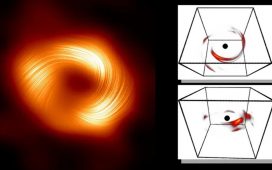The Wuhan wet market was a ‘victim’ of coronavirus rather than the cause, according to the Chinese Centre of Disease Control and Prevention.
Genetic evidence has confirmed that the virus originated in Chinese bats before it jumped to humans via an ‘intermediary animal’, but the exact location of the transition is unknown.
Chinese authorities previously said the first cases of the virus emerged at a local seafood market in Wuhan.
But a study of the animals being sold there rules this theory out, after all samples of the animals in the market tested negative for COVID-19, meaning they could not have infected shoppers.
‘It now turns out that the market is one of the victims,’ Gao Fu, the director of the Chinese CDC, told Chinese state media in a radio interview yesterday.
Colin Carlson, a zoologist at Georgetown University, said the outbreak of coronavirus being linked to the wet market was likely the site of a ‘super-spreader’ event, where one person spread the virus to many other people.
The revelation is likely to lead to increased speculation that the virus leaked from a Chinese research laboratory, including from US president Donald Trump, who said he’d seen evidence to prove it started in a virology lab.
However, both US and Chinese researchers say there is no evidence to support this theory.

The Wuhan wet market was not the origin of the coronavirus pandemic as previously thought, studies show, but may have been the site of a super-spreader event.
A majority of the original 41 cases of COVID-19 reported to the World Health Organisation in December were linked to the 116-acre market in Wuhan.
This led to the wet market being shut down on January 1 – the majority of its 3,600 shops had reopened by April 14, according to reports.
However, scientists at Harvard, MIT and the University of British Columbia examined four samples from the seafood market and found that traces of the virus were ‘99.9 per cent’ identical to those taken from a Wuhan patient.
This suggests the virus detected in the samples came from infected visitors or vendors, indicating ‘Sars-CoV-2 had been imported into the market by humans’.
‘The publicly available genetic data does not point to cross-species transmission of the virus at the market,’ said Alina Chan, a molecular biologist, and Shing Zhan, an evolutionary biologist, who were involved in the study.
Gao Fu appeared to contradict these findings – and the statement he has now made about the market not being responsible for the outbreak – in January in an interview for Chinese state television.
He said the virus had not just been found in people’s bodies but on wild-meat stalls – prompting him to call for an end to the consumption of wild animals.
The study reinforces research published by a team of Chinese researchers in January, which showed the first person confirmed to have coronavirus was likely exposed as early as December 1 – showing symptoms on December 8.
The ‘patient zero’ – the first person to actually contract COVID-19 in Wuhan – has not been confirmed but authorities believe it may have been a 55-year-old man from Hubei province infected on November 17.
This suggests the virus was spreading undetected in the human population around Wuhan for weeks before the ‘super spreader event’ at the market.
‘The novel coronavirus overturns much of what people have known and many of its patterns are beyond our cognition,’ said George Gao Fu of the Chinese CDC.
Dr Carlson told Live Science that the idea of the wet market being the origin had become a ‘useful narrative’ but the evidence had never been conclusive.
The narrative came from the fact that wet markets sell exotic, endangered and trafficked animals that could be the link between bats and humans.
The discovery that none of the animals in the market that were sampled tested positive led to the super-spreader theory.
It may have been the first of many such events as the virus progressed and spread around the world, and a number of infected individuals caused clusters of infections.
Dr Carlson said it could be some time before we know exactly what animal caused the virus to spread from bats to humans or even when – as it’s taken months to rule out one site.
‘This is an animal-origin virus that made the leap, maybe from bats to humans, maybe through… another animal, maybe through livestock. And we don’t have the data yet to know where or how,’ he said.
‘That takes time. The study that really definitively showed the bats that SARS came from was published in 2017,’ – 15 years after SARS first broke out.
‘It took that long to go through caves, to go through samples, and build an evidence base where we could confidently say: “This was the sort of bat, in this cave, at this time,”‘ Carlson said.

Originally Chinese authorities said the first cases of the virus emerged at the local seafood market, but a new investigation of the animals being sold ruled that out
Concerns over the origins of the virus, stemming in part from a lack of or conflicting information, has led to claims of cover up and that it is ‘man made’.
US secretary of state Mike Pompeo said earlier this month there was growing proof this is how the pandemic began.
Pompeo accused China of spreading disinformation in claims there is proof the virus did not originate in a lab. He has referred to COVID-19 as the ‘Wuhan virus.’
‘The mere fact that we don’t know the answers – that China hasn’t shared the answers – I think is very, very telling,’ said Pompeo.
The idea it started in a Chinese laboratory even led to Donald Trump suggesting he could impose tariffs of $1 trillion in retribution for the pandemic.
The lab is located near a wet market that has been identified as the likely epicenter of the outbreak that took place late last year.
However, the president would not divulge what the evidence was that confirmed his suspicions, when asked by a reporter.
These suggestions have been disputed by researchers in and out of China.
Director of the Wuhan virus lab, Wang Yanyi, spoke to china Central Television about the claims, saying COVID-19 is genetically different from any live virus they ever studied in the institute.
Other studies compared the genome of COVID-19 with genetic information on other bat coronaviruses held at the lab – there was no match.








